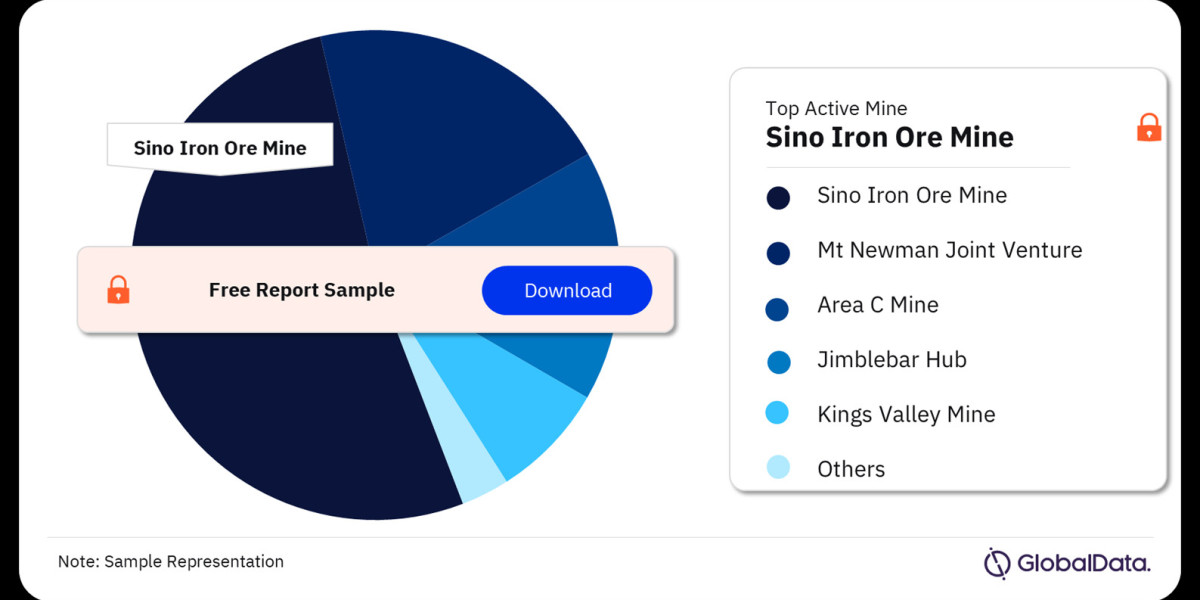However, the Australian iron ore mining market isn't without its complexities. This article delves into the industry's landscape, exploring its significance, production trends, key players, and the factors shaping its future.
A Resource Giant: Australia's Iron Ore Reserves and Production
Australia boasts a staggering 51 billion tonnes of crude iron ore reserves, accounting for a whopping 28.3% of the global total [1]. Western Australia takes center stage, housing nearly all these reserves and responsible for 98.9% of the country's iron ore production in 2022 [1]. This dominance is attributed to high-grade deposits in the Pilbara region, making extraction commercially viable.
Production has seen a steady rise, with Australia registering 944.1 million tonnes (Mt) in 2022 [1]. While growth slowed in 2023 with an estimated 0.3% increase, forecasts predict a rebound of 3.1% in 2024, reaching 1,220.2 Mt by 2030 at a Compound Annual Growth Rate (CAGR) of 3.8% [1]. This growth is fueled by continuous exploration efforts, with Western Australia witnessing a 23% increase in exploration spending in 2022 [1].
Market Movers: Key Players and Industry Dynamics
The Australian iron ore mining market is a concentrated landscape dominated by three major players: Rio Tinto, BHP, and Fortescue Metals Group (FMG). These giants control a significant share of production and exports, shaping the overall market dynamics.
Rio Tinto: A global mining behemoth, Rio Tinto is a leader in the Australian iron ore market. It boasts a strong presence in the Pilbara region and leverages its expertise to optimize production and minimize costs.
BHP: Another diversified giant, BHP holds a significant share in Australian iron ore production. Their focus on operational efficiency and large-scale projects contributes significantly to the market's overall output.
Fortescue Metals Group (FMG): The relative newcomer, FMG, has established itself as a major force. Their rapid growth and focus on innovative technologies position them as a key player in the future of the industry.
These leading miners collaborate to some extent, particularly on infrastructure projects that benefit the entire industry. However, they also compete fiercely for market share and influence iron ore prices. Additionally, a handful of junior and mid-tier miners contribute to the overall production, adding diversity to the market.
The China Factor: A Symbiotic Yet Volatile Relationship
China's insatiable appetite for steel, a direct consequence of its booming construction sector, has been a key driver of the Australian iron ore market. China accounts for the lion's share of Australian iron ore exports, with a strong reliance on the high-quality and consistent supply offered by Australian mines [2]. This dependence has been mutually beneficial, fueling Australia's economic growth and providing China with the raw materials for its industrial expansion.
However, this dependence comes with inherent volatility. A slowdown in China's economy, particularly its property sector, can significantly impact demand and subsequently, iron ore prices. This vulnerability was evident in 2023-24, where a slump in the Chinese property market led to a projected decline in iron ore prices [3].
Beyond China: Diversifying Markets for Long-Term Stability
Recognizing the risks associated with overdependence on a single market, Australian miners are actively exploring diversification strategies. Japan, South Korea, and India are emerging as potential alternative markets, offering opportunities to expand the customer base and mitigate risk. Additionally, the growing demand for high-quality iron ore for producing cleaner steel presents a promising avenue for Australian miners.
Technological Advancements: Driving Efficiency and Sustainability
The Australian iron ore mining industry is embracing technological advancements to enhance efficiency, safety, and sustainability. Automation is playing a key role, with autonomous trucks and drill rigs streamlining operations and reducing manpower requirements. Additionally, investments in data analytics and artificial intelligence are being made to optimize production planning and resource utilization.
Sustainability is another crucial focus area. Miners are exploring ways to reduce their environmental footprint, including adopting cleaner technologies for processing iron ore and implementing stricter water management practices. These efforts are essential for maintaining a social license to operate and ensuring the industry's long-term viability.
Buy the Full Report for More Active Mine Insights into the Australia Iron Ore Mining Market, Download a Free Report Sample



